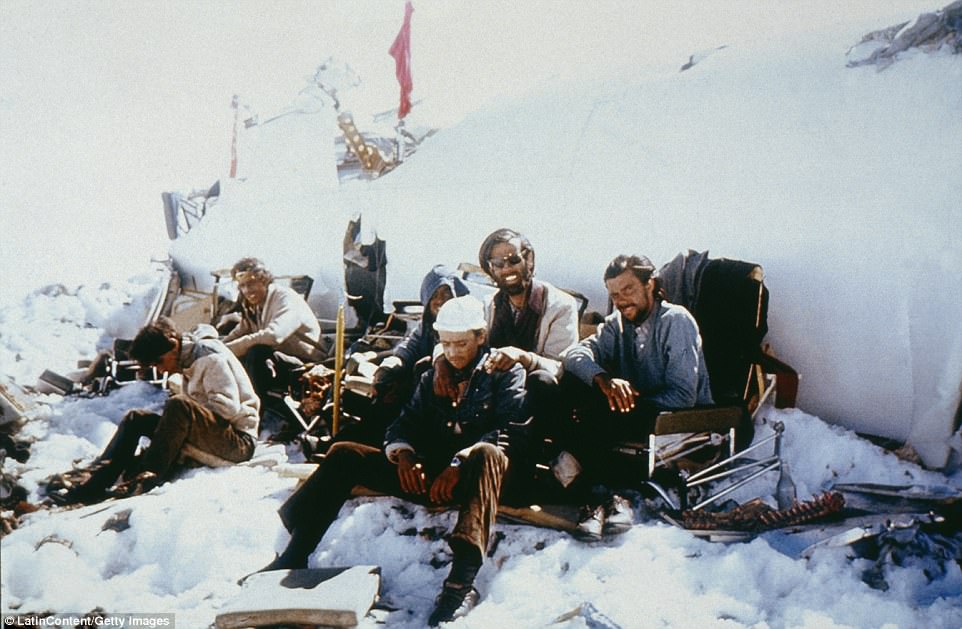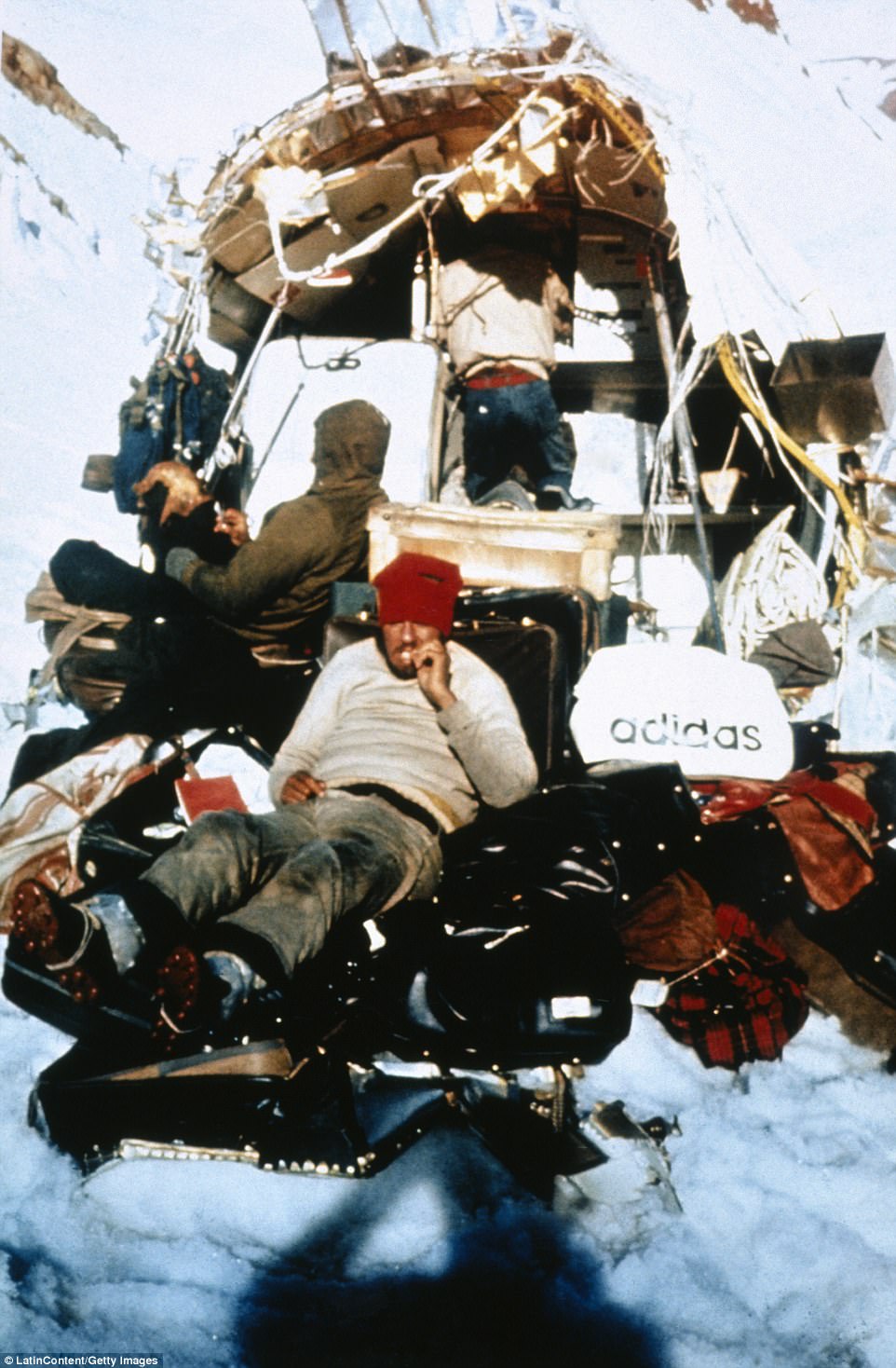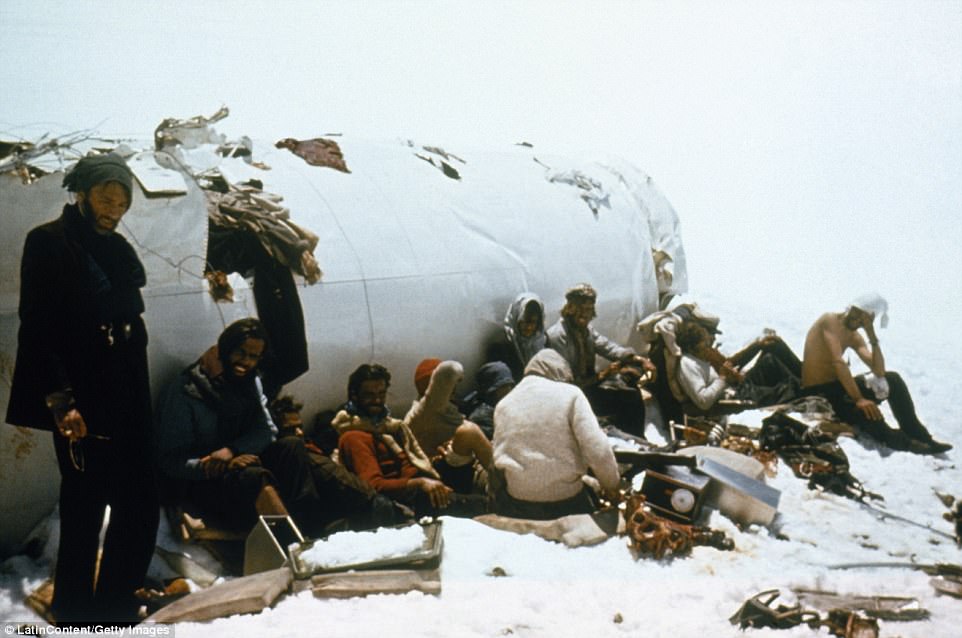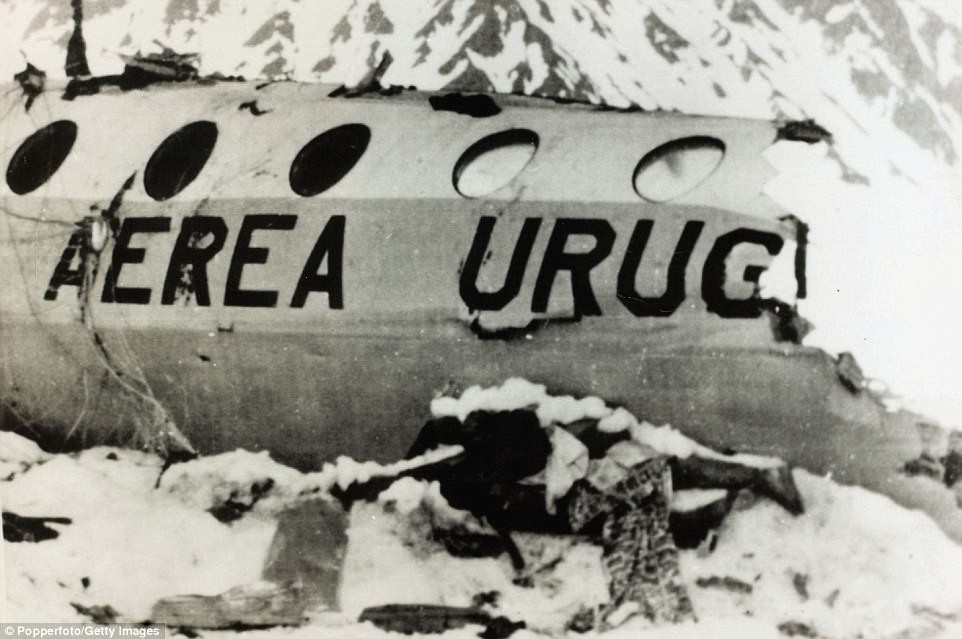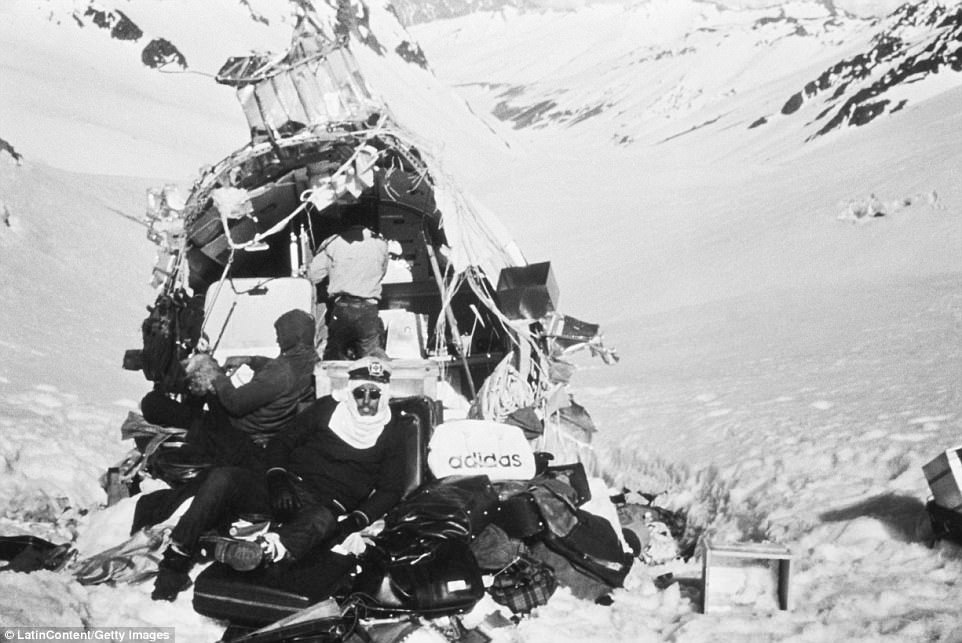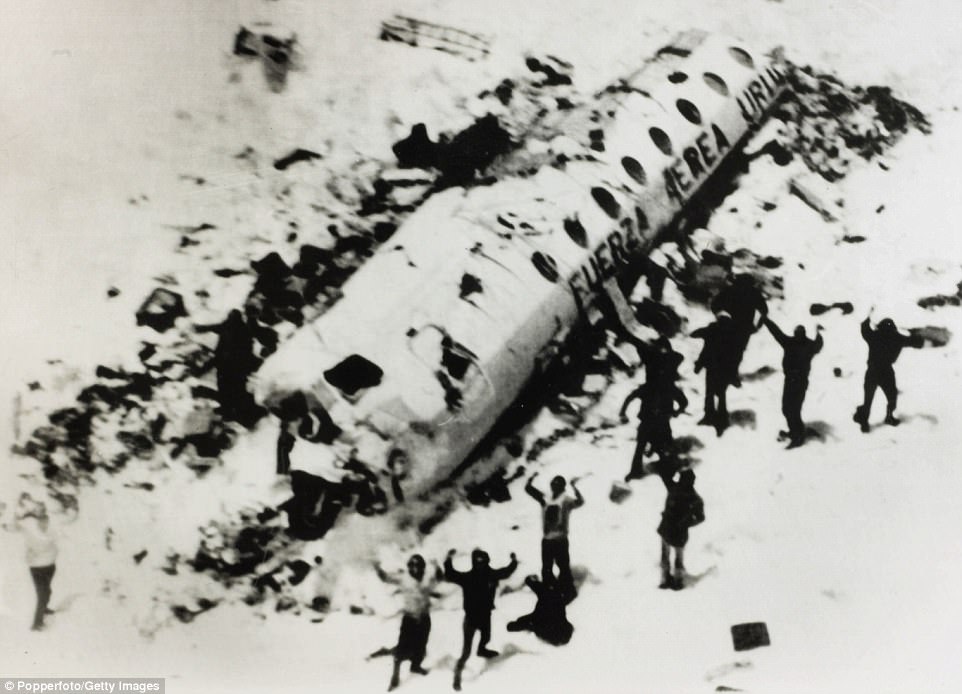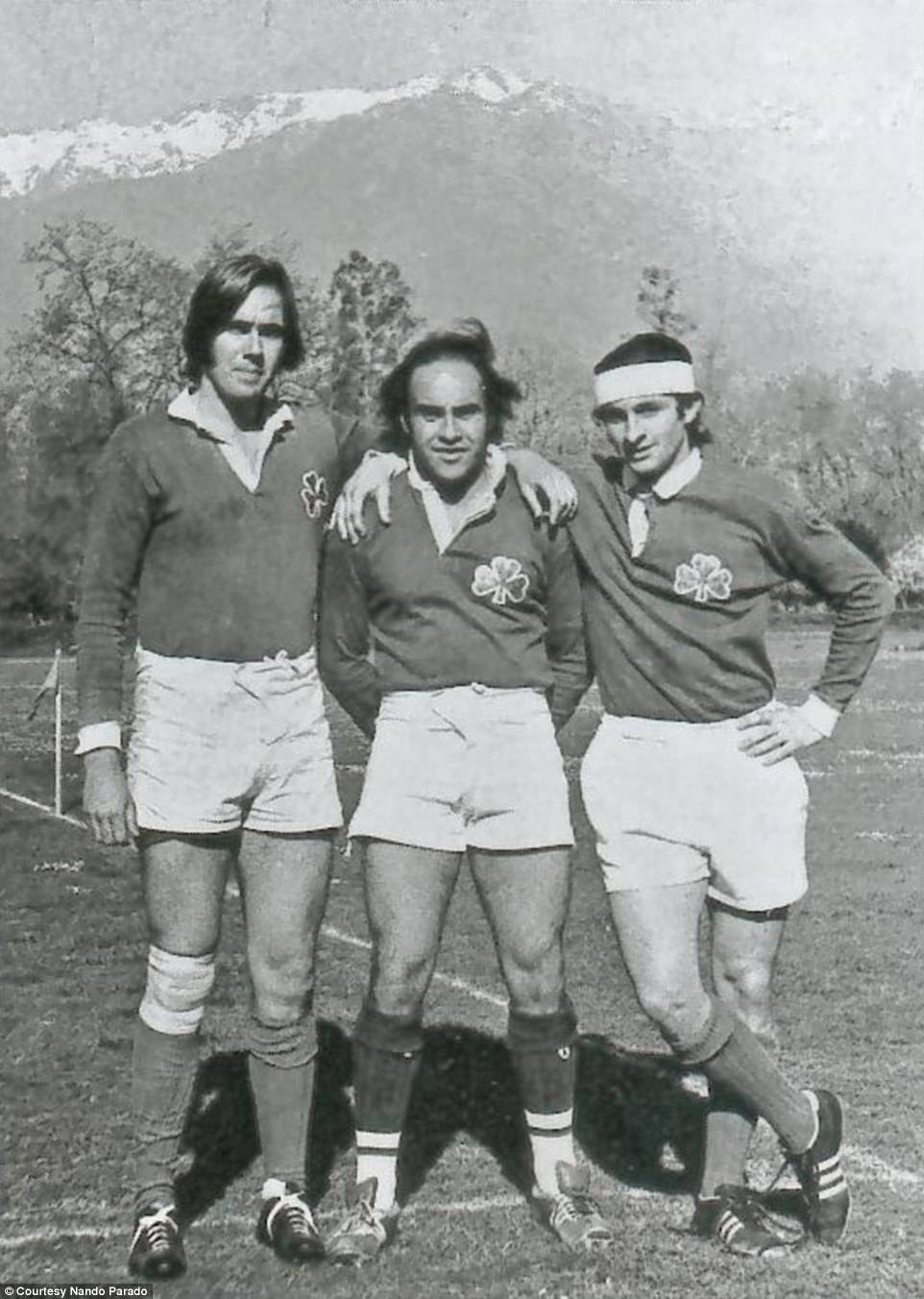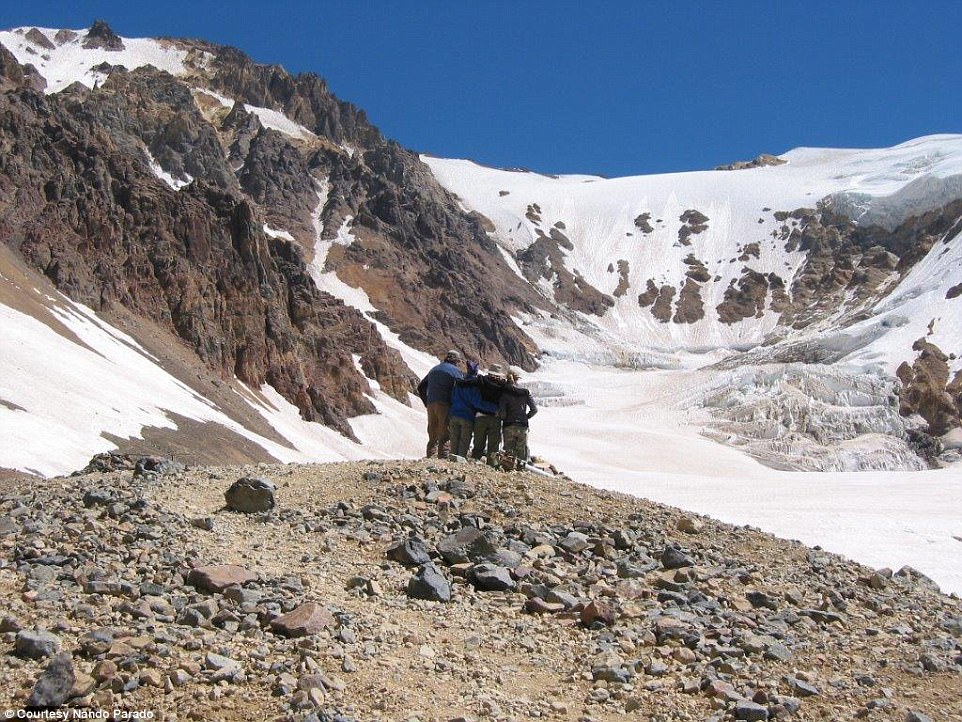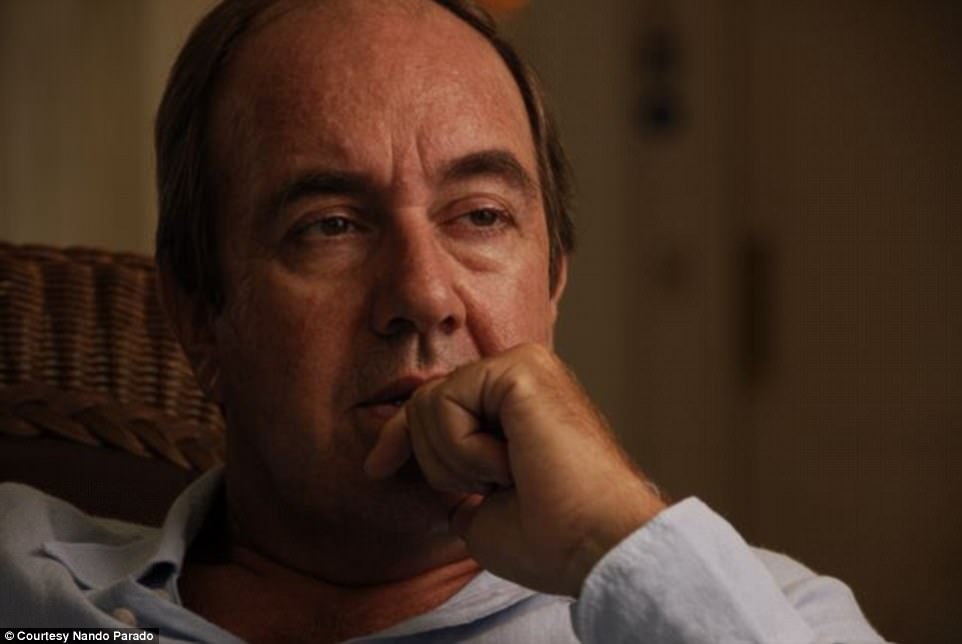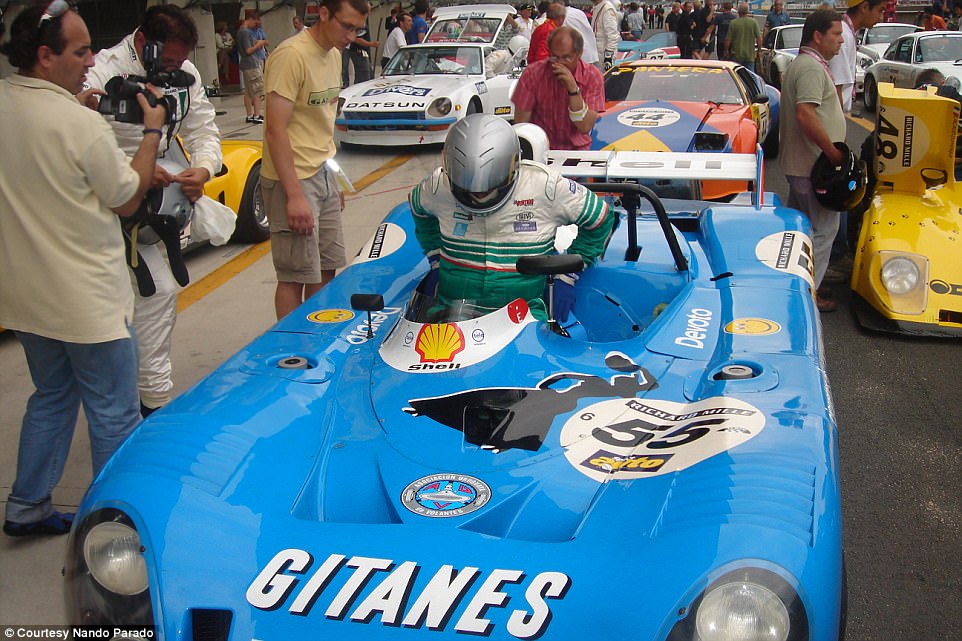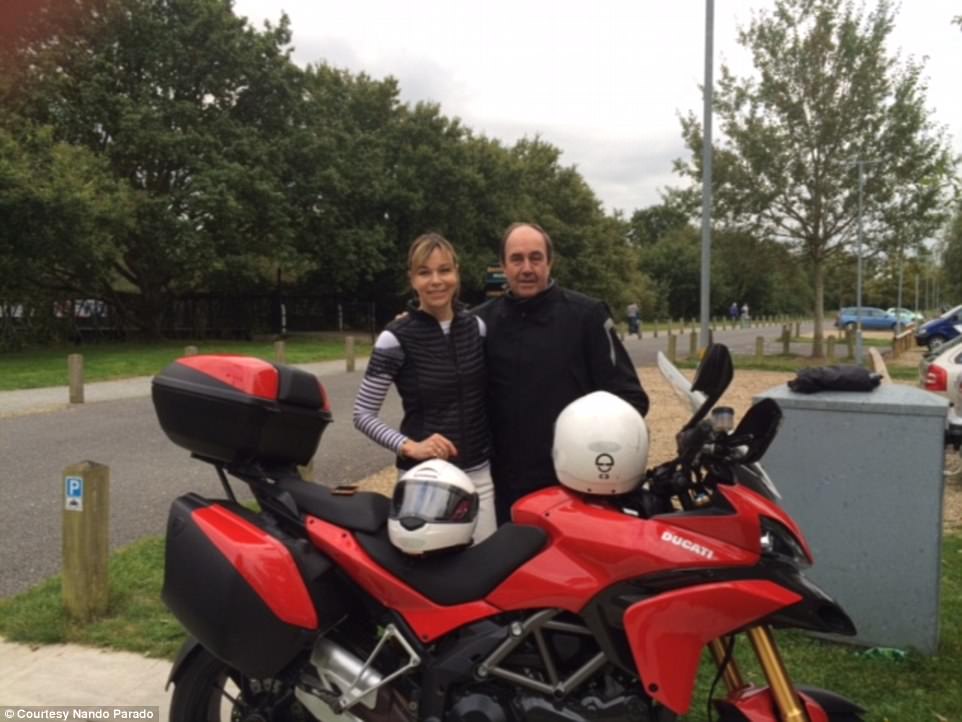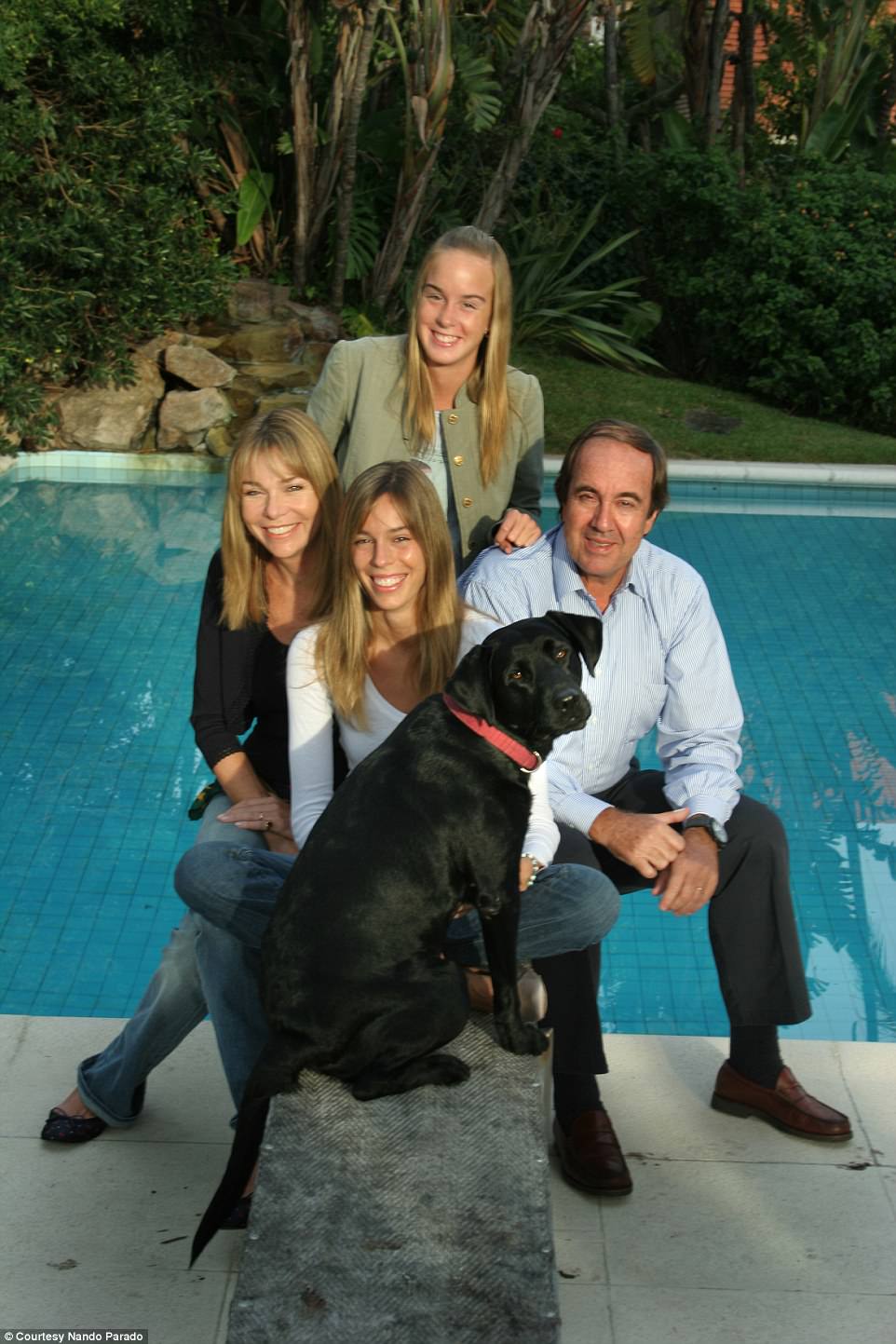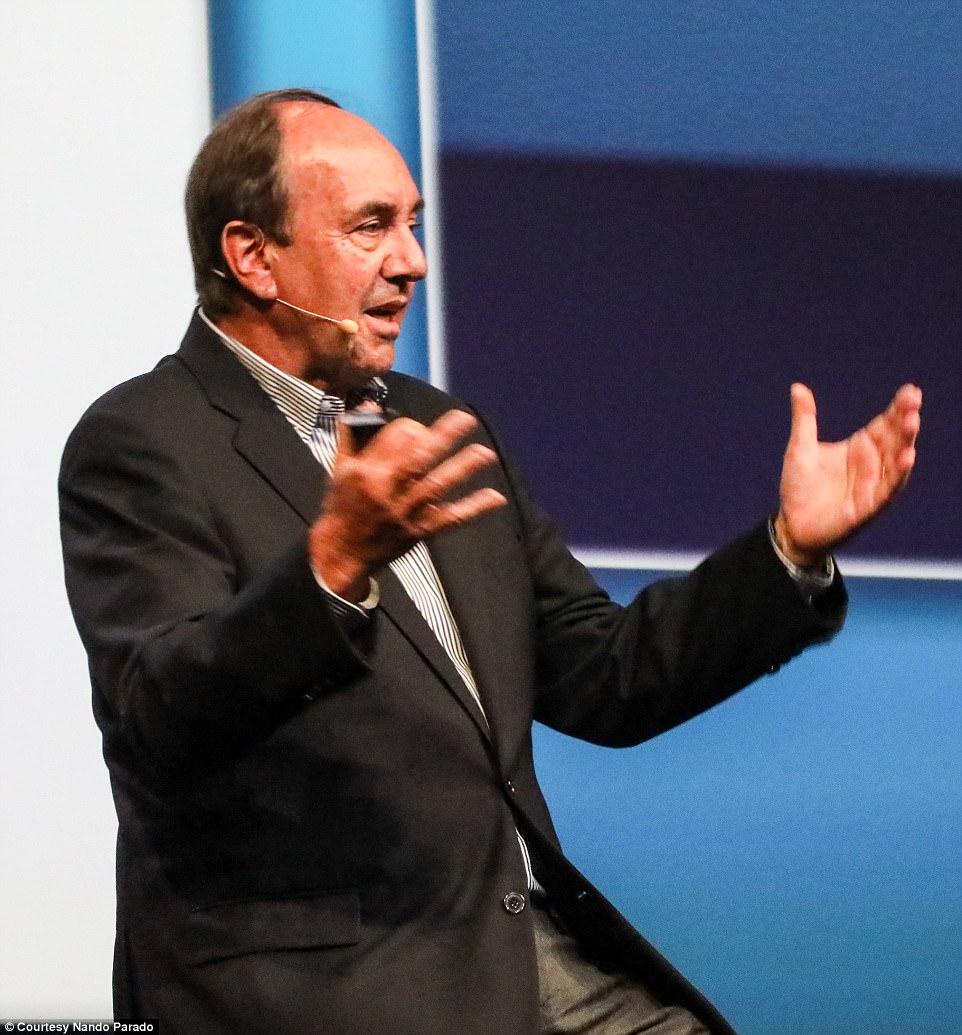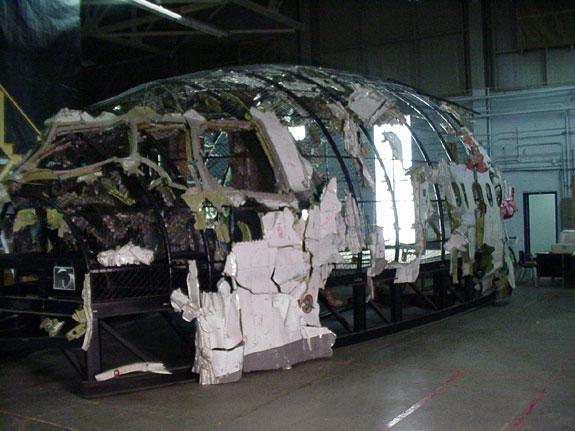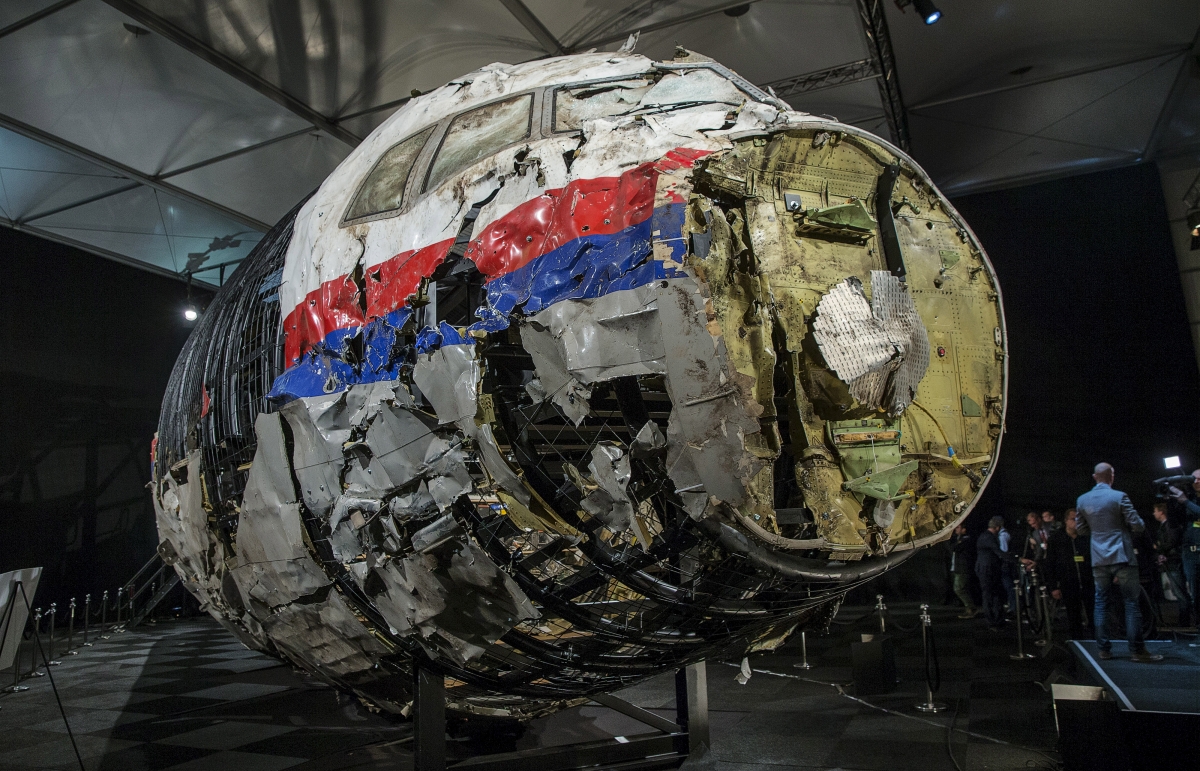Liittynee aiheeseen, ainakin kontekstissa
kun yleisilmailussa menee kaikki päin helvettiä... hyvä artikkeli Daily Painiltä:
EXCLUSIVE: 'When you have only one option... it's easier than you think': 45 years on, survivor of 1972 Andes plane wreck recalls resorting to cannibalism to survive being stranded in the mountains for 72 days
- Fernando Parrado was 22 when he was in a plane crash that killed 29 people and left 16 survivors stranded in the Andes Mountains for 72 days
- Mr Parrado’s younger sister, his mother and his best friend all died in the crash or soon after from their injuries
- There was no food on the plane so the survivors had to eat the bodies of their dead friends in order to live longer than a few days or weeks
- Though 27 survived the initial crash, eight people were killed when an avalanche struck the plane wreckage where they slept
- On their 61st day on the mountain, Mr Parrado and another survivor, Roberto Canessa, climbed for ten days over the mountains
- They eventually met a Chilean farmer who was able to call the authorities who brought helicopters to the mountains to rescue the 14 boys still at the crash site
- Forty-five years after the crash, Mr Parrado, now 67, retells his incredible story of resilience and how his love for his father motivated him to survive despite all odds
By
Ann Schmidt For Dailymail.com
PUBLISHED: 13:36, 22 November 2017 | UPDATED: 14:01, 22 November 2017
Abandoned in the unforgiving, frozen wasteland of the Andes Mountains, 22-year-old Fernando Parrado was certain he was going to die.
Even now, 45 years after the plane crash disaster that killed 29 people and led him and the 15 other survivors to resort to eating the corpses of their dead friends in order to survive for 72 days in the Andes, Mr Parrado remembers the feeling of despair and his absolute certainty that he would not make it.
'There was no way out. No way,' Mr Parrado tells DailyMail.com. 'Until the last minute of the 72nd day, I thought I was going to die. When you are condemned to die for such a long time, fear does not go away… I was so afraid I wanted to vomit every day because I had a cramp in my stomach because I was dead. I was a walking dead man… Hope only prolonged the agony.'
On October 13, 1972, an airplane carrying 45 passengers and crew members crashed in a remote area of the Andes Mountains. Twenty-nine people died and only 16 boys and men survived the 72 days they were stranded in the mountains. A camera was found in some of the wreckage and some of the survivors took pictures, including this one showing Alvaro Mangino, Carlos Paez, Daniel Fernandez, Jose Luis 'Coche' Inciarte (with his hands on Fernandez's shoulders) and Alfredo 'Pancho' Delgado, who were all rescued in December

The camera from the wreckage was found in mid-November. Alfredo 'Pancho' Delgado is pictured far right sitting on the wrecked fuselage, with Roberto Canessa leaning against the plane beside him. In the back row, from left to right are: Gustavo Zerbino, Eduardo Strauch, Mr Parrado (circled) and Javier Methol. The two boys lounging in the front row are Adolfo 'Fito' Strauch and Carlos Paez. All the boys pictured survived the crash and only Javier Methol has passed away. He died from cancer in 2015 at the age of 79
Mr Parrado – who goes by Nando – and 44 others from Montevideo, Uruguay, were flying to Chile on Friday, October 13, 1972, when their plane crashed in the middle of the Andes Mountains, miles away from civilization. Most of the passengers were part of a rugby club team along with friends and family of the players, who had chartered the Uruguayan Air Force Flight 571, so they could play matches in Santiago.
By the end of their second day on the mountain, 17 people had died from their injuries, including Mr Parrado's mother, and his best friend. Eight days later his younger sister died in his arms. By the time they were rescued after Mr Parrado and another rugby player, Roberto Canessa, found help after 10 days of climbing out of the mountains there were only 16 survivors left.
One of the survivors, Fernando Parrado, now 67, (pictured with his wife) was only 22 years old when the plane crashed. He says that every minute he was on the mountain, he was convinced he was going to die. He and another rugby player, Roberto Canessa, were the reason the survivors were rescued, because the two of them climbed their way out of the Andes to get help
With few warm clothes and no real equipment or food to speak of, the survivors had to use their ingenuity and the remnants of the wrecked plane, a Fairchild FH-227D, to stay alive. They tore off the covers from the plane seats to make blankets for warmth in the freezing temperatures and made contraptions from foil inside the seats to melt ice for drinking water.
Most necessary was their decision to eat the bodies of their friends who had died.
'Hunger is the most primitive fear of the human being,' Mr Parrado says. 'Not knowing when you are going to eat again is the most incredible fear a human being can have… And then when your body starts to feed upon itself, everything that you have inside is turned into energy and you feel it and that is killing you.
'And I said, "Man, I am dying. I am dying. I'll be dead in three, four, five, six, ten days. I'll be dead". But you're not dead. And you're a human being and you think and say, okay, what do I do now? And I said, "Okay, the only food that we have are the dead bodies of our friends and the crew. That's what we have". And that's – when you have one option, you take one option. If you have two options, you can analyze and decide. But if there's only one… It's not a mystery, it's not complicated. It's easier than you think because it's the only option.'
Mr Parrado, now 67, talks about the crash as a matter of fact, simply as one horrible event in the midst of an otherwise fulfilling life. If anything, he talks about the experience with some cynicism, but he isn't traumatized. As he speaks, his voice is calm and confident and he affirms 'there is nothing I cannot say' about the disaster of 45 years ago.
'It doesn't rule my day by any means – or my life by any means. I am very pragmatic,' he says. 'I was educated by my father who was the king of pragmatism. And as soon as I came out of that ordeal, the first day, my father told me: "Look Nando, there's no way you can change the past. This is not going to be the most important thing in your life. You have been born again. Don't destroy your second life. Have a life".
'And that's what I've been doing, having a life. So I don't dream, I don't have nightmares. Since the first night that I spent in the hospital [after being rescued] until last night, I never had one single second of an image of what happened to me while I sleep. Of course sometimes I think about it… but only usually if I face something that looks a little bit important or a little bit difficult, I say, Jesus man, this compared to that? Well this is a joke.'
Mr Parrado has certainly moved on and lived an entire lifetime since the plane crash, but when he talks about it now, he sometimes says 'over there', as if the spot where the plane crashed is just around the corner or somewhere he can easily point to.
'Over there, at that altitude, it's like being in the moon or Venus or Mars,' he says. 'There's nothing. Absolutely nothing. And when I mean nothing, there is nothing. It's not like the Rockies, you know, where you can have a town or you can see trees once in a while. Over there, there's nothing.'
The survivors made several attempts to escape the mountains instead of waiting to get help and on one of the trips towards the east in mid-November, they found the section of the plane's tail that had broken off in the crash. Survivors Roy Harley (with his back to the camera), Roberto Canessa (left), Antonio Vizintin (center) and Mr Parrado (who took the picture) were the 'expeditionaries' for this trip to attempt to fix the plane's radio, which was unsuccessful. However, because of another expedition taken by Mr Parrado and Canessa, they were all rescued in December
Today, Mr Parrado lives in Montevideo and is a successful television producer and the president of the prosperous hardware store chain his father Seler Parrado started in 1958. Mr Parrado has been married to his wife Veronique, 58, for 37 years. They have two daughters, aged 34 and 32 and two grandchildren, aged four and six.
Though he speaks with authority and confidence today, he was not always so self-assured. Born the middle of three children to loving parents Seler and Ukrainian-born Eugenia in Montevideo, Mr Parrado was slightly shy and awkward.
He says he was an average student, mostly interested in cars, playing sports and chasing girls. He and his best friend Francisco 'Panchito' Abal did almost everything together, though the charming, outgoing Abal was more successful than his gangly and somewhat timid friend.
The two also played rugby together with the Old Christians Club, a Montevideo team. Abal was one of the team's best players as a wing three-quarter and the tall and tough Mr Parrado was a forward in the second line of the scrum. So when the team was going to play a few matches in Chile in 1972, the two best friends were on the October 12 flight.
In order to afford the chartered flight, the team needed to fill the plane, so players convinced family and friends to travel with them for a short vacation in Chile – among those asked along were Mr Parrado's mother and younger sister. The team had done the same trip the year before, so there was no need for concern.
However, because of inclement weather on October 12, the pilots landed the Fairchild in Argentina before crossing the Andes and the team's excursion was postponed for the night.
In order to survive longer than a few days or weeks, the boys had to eat the bodies of their friends who had already died in the crash. Though it was a difficult decision to make, it was the only thing they could do. Mr Parrado says: 'When you have one option, you take one option. If you have two options, you can analyze and decide. But if there's only one… It's not a mystery, it's not complicated. It's easier than you think because it's the only option.' A group of the survivors are pictured sitting outside the wrecked fuselage near the end of November before they were rescued

Though the flight took off from Montevideo, Uruguay on October 12, inclement weather forced the pilots to stop in Mendoza, Argentina for the night. The next afternoon the plane took off again and flew south to a pass in the Andes low enough for the plane, a Fairchild FH-227D, could cross. While still in the mountains, the pilots misjudged their location and started landing, leading the plane to crash. Antonio Vizintin is pictured at the tail section of the wrecked Fairchild with Harley inside the tail section and Canessa behind him, facing away from the camera. All three made it out of the Andes and are still living today
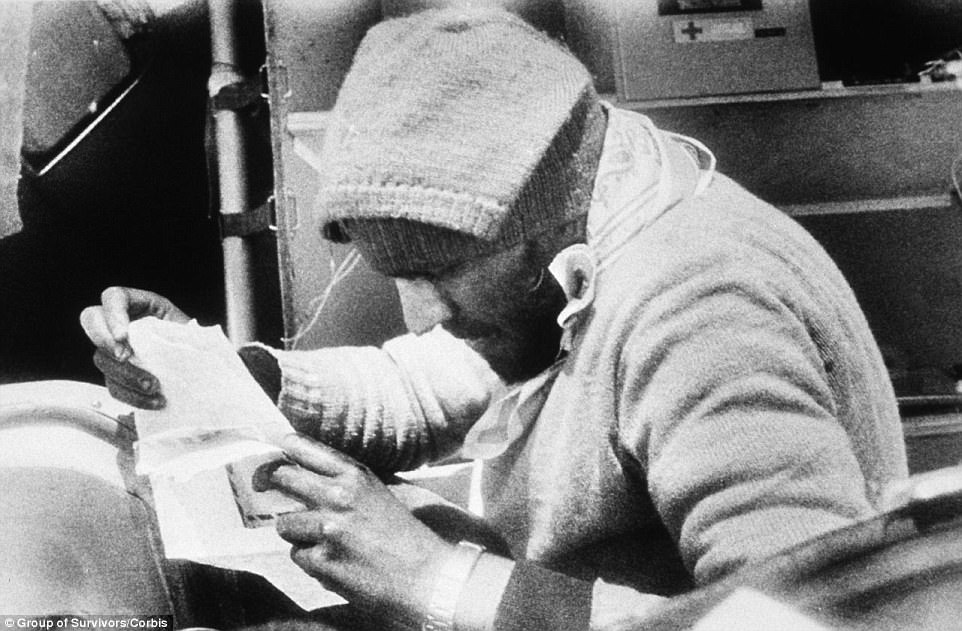
After Mr Parrado's sister passed away, there were 27 survivors. However, on October 29 an avalanche buried the wreckage of the plane where the survivors slept and killed another eight people, including the last living woman, Liliana Methol, though her husband survived. Mr Parrado was initially trapped under the snow and thought he would die before another of the boys dug him out. Mr Parrado is pictured sitting inside the tail section of the plane on one of the trips to the tail
On the afternoon of October 13, 1972, Flight 571 took off from Mendoza, Argentina, and flew south to a specific pass in the Andes Mountains that was low enough for the Fairchild to pass through. While they were still in the middle of the Andes, the pilots misjudged the location of the plane and started to land, thinking they were already in Chile.
According to the 1974 book Alive by Piers Paul Read, the plane's right wing hit the side of a mountain, broke off and cut off the tail of the plane as two of the flight crew and three of the players buckled into their seats were sucked out of the back of the plane. After that, the left wing of the plane also broke off.
Until the last minute of the 72nd day, I thought I was going to die. When you are condemned to die for such a long time, fear does not go away… I was so afraid I wanted to vomit every day
Nando Parrado
What was left of the plane landed in a valley at a speed of about 200 knots and two more boys were sucked out the back. The fuselage hit the ground at just the right angle, however, and slid down the slope until it stopped, bringing the rows of seats inside the plane to break off and crush many of those who were sitting, including Mr Parrado's mother Eugenia, who was crushed to death.
The Fairchild had landed in a remote area of the Andes at about 11,500 feet in Argentina, near the Chilean border. In the crash, 12 people – including those who had been sucked out of the plane – died and three more died the next day, including Mr Parrado's best friend 'Panchito'.
Mr Parrado himself was knocked unconscious early on in the crash and was in a coma for the next two days with a head injury that the survivors initially thought was so serious it would soon kill him. However, he came to on their third day on the mountain. He was weak and confused, but otherwise okay.
When Mr Parrado's sister passed away, he said he became angry because he couldn't mourn for her the way he wanted to. He says: 'I think survival mode, it tolls itself on your brain and it doesn't leave space for that because if not, you cannot fight against survival, against the cold, the hunger. So your brain, by itself… I think the brain rejects the thoughts that can harm your survival. And I became very angry with myself because I couldn't feel anything.' Pictured is the wreckage of the Fairchild with the remains of one of the victims visible
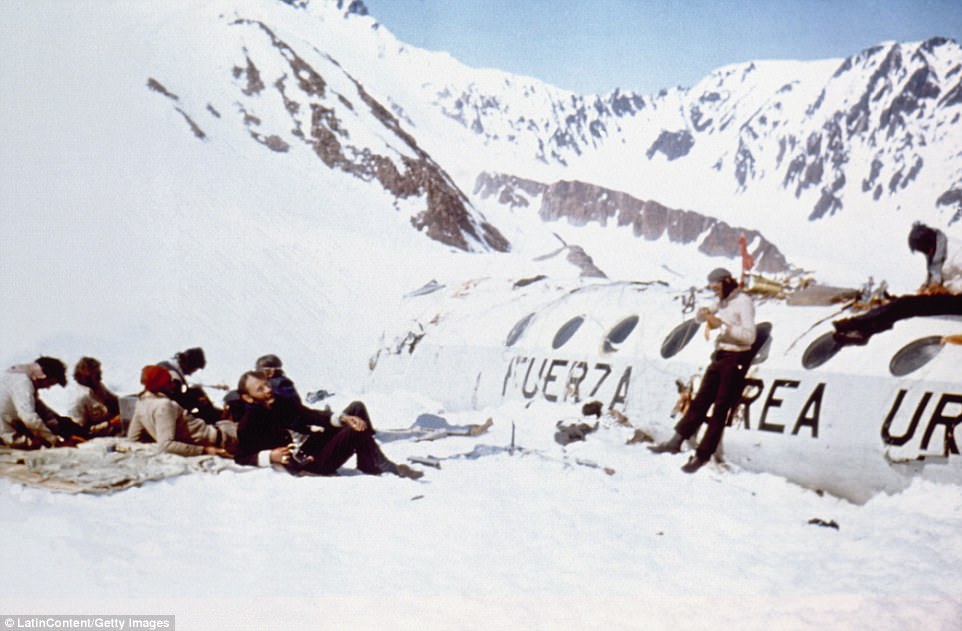
Roberto Canessa (right, leaning against the fuselage) and Alfredo 'Pancho' Delgado (sitting on top of the fuselage) are pictured stitching together squares of insulation to make a sleeping bag that Canessa, Mr Parrado and Vizintin used for their expedition while a group of the other survivors are lounging in the sun. All the boys pictured were eventually rescued and all but Javier Methol (pictured facing the camera on the left) are still alive today
+21
Antonio Vizintin (center), Roberto Canessa (left) and Roy Harley (with his back to the camera) are pictured at the tail section of the plane, which broke off in the crash. Harley is trying to fix the plane's radio with the batteries in the tail section. The main piece of the radio was in the front of the plane and the boys removed it to be brought to the tail in case they could get it to work again, but they were unsuccessful. However, all three boys pictured eventually made it out of the Andes
He immediately took to caring for his younger sister Susana, 20, who he affectionately called Susy. She was semi-conscious, calling for her mother, praying or sometimes singing. She had scratches on her face and her feet were frostbitten. Though they had no doctors on the plane, two medical students who were on board – Roberto Canessa and Gustavo Zerbino – believed she also suffered severe internal injuries.
Mr Parrado stayed with her, warming her feet with his hands, bringing her water, embracing her and comforting her as best he could. One afternoon, as he was embracing her, her breathing slowed to a stop. Though he tried desperately to revive her, his sister was gone, leaving 27 survivors.
It was their eighth day on the mountain.
The next morning, Mr Parrado buried his sister in the snow outside the fuselage, though he was unable to mourn for her the way he had wanted to.
'I think if that would have happened in the city… it would have been extremely difficult to cope with. Over there, you are so strained or so pushed by the circumstances and by survival that you do not have the strength to be sad.
'I discovered something over there. I discovered anger, anger like something I have never felt before. Probably anger also gave me some strength. Anger because I buried my mother with my hands. I buried my sister, I buried my friends and I couldn't feel anything. I couldn't cry, I couldn't feel sorrow, I couldn't feel anything.
'I said: "Nando, who the hell are you? What happened to you?" and I became very angry because I didn't understand myself. I should be crying, I should be suffering and I can't.
On their 61st day on the mountain, Mr Parrado, Roberto Canessa and Antonio Vizintin went on the survivor's final expedition, though Mr Parrado and Canessa told Vizintin to turn around so the two stronger boys would have more food for their journey. After ten days, they found a Chilean farmer who called for help. When the helicopters came to rescue the remaining survivors still at the crash site, Mr Parrado went along to guide the pilots. Pictured are the remaining survivors who were left at the plane as the helicopter is coming to rescue them
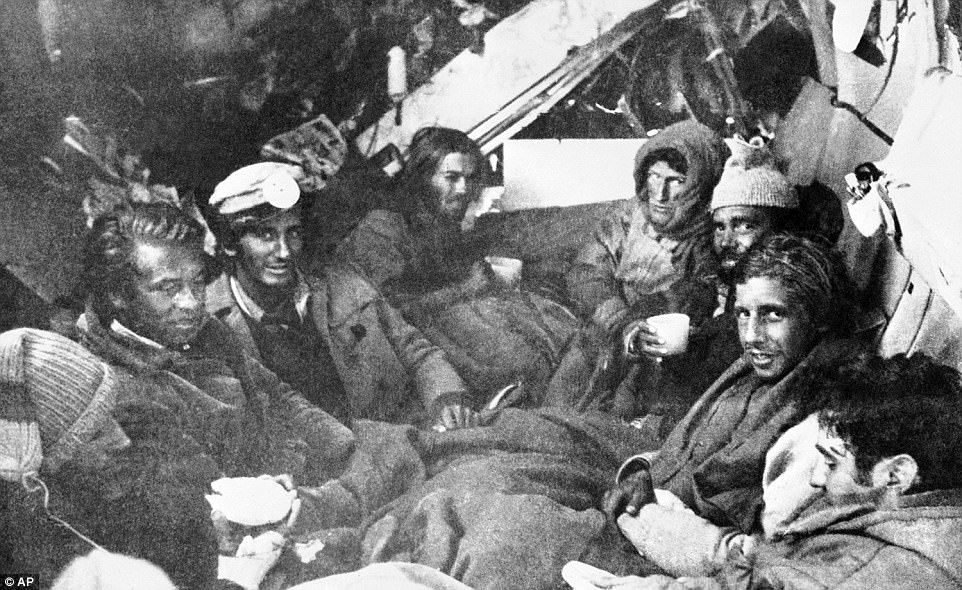
Because of inclement weather, only six of the fourteen boys could be rescued from the mountain on December 22. The remaining eight had to spend one final night in the plane wreckage with a small team of medics and mountaineers who stayed with them. From left to right, six of the eight survivors are pictured on their final night on the mountain: Adolfo 'Fito' Strauch, Gustavo Zerbino, Jose Luis 'Coche' Inciarte, Roy Harley, Alfredo 'Pancho' Delgado and Ramon 'Moncho' Sabella
'But I think survival mode, it tolls itself on your brain and it doesn't leave space for that because if not, you cannot fight against survival, against the cold, the hunger. So your brain, by itself… I think the brain rejects the thoughts that can harm your survival. And I became very angry with myself because I couldn't feel anything.
'I am burying my family with my hands. We didn't have shovels, we didn't have anything,' he says. 'My friends, I'm closing their eyelids with my hands like in the movies, you know? And I couldn't feel anything and I was very angry with myself. I was very angry. But life goes on.'
Over there, you are so strained or so pushed by the circumstances and by survival that you do not have the strength to be sad
Nando Parrado
On his way back to the plane after burying Susy, Mr Parrado was hit with the reality of the situation. Though he had been aware of the dire circumstances he and his fellow survivors were in, caring for his sister distracted him and kept his mind off the overwhelming horrors around him. In that moment, he says in his memoir, he knew for certain he was going to die.
'I remember the fear of dying,' Mr Parrado says. 'I didn't want to die and I was going to die. People ask me, how does that feel? And there's no way you can explain. How can you explain?... Just imagine that because of something that you did, you are going to be put on the electric chair. How do you feel when they tie your arms to the chair? It's not a good feeling. Well I felt that for 72 days and 72 nights. I felt those mountains were stealing away from me my life. But I was still breathing.'
Even before that moment, Mr Parrado had become obsessed with the idea of escaping, but now the desire to leave burned more fully. The other survivors had hope they would be found and rescued, but early on, Mr Parrado knew he would have to escape if he wanted to survive and get back to his father, which he wanted more than anything else.
'I saw the script of what was going to happen… and I said, man, this is going to be hell. We are going to die. This is horrible. This is absolutely horrible. But I do not want to die. I want to go back to my father. I want to live. I don't want the mountains to steal away from me this life that I have. I want to experience love, I want to experience a family. I want to live. I'm still breathing, I want to live. And in order to live, I had to get out of here.'
The team chartered the plane from the Uruguayan Air Force and recruited their friends and family to take the trip with them to fill up the seats of the plane. Mr Parrado is pictured center with crash survivor Antonio Vizintin behind him in 1971, the year before the crash
The day after the crash, the rugby team captain, Marcelo Perez, had taken inventory of everything edible on the plane. According to Read's book Alive, for the initial 28 survivors, there were: three bottles of wine, a bottle of whiskey, a half-drunk hip flask of whiskey, a bottle of cherry brandy, a bottle of crème de menthe, eight bars of chocolate, five bars of nougat, a packet of salted crackers, two cans of mussels, one can of salted almonds, one small jar each of peach, apple and blackberry jam, some caramels that had been scattered across the floor of the cabin and some dates and dried plums that had also been scattered.
jatkuu alla...
http://www.dailymail.co.uk/news/art...ing-1972-Andes-plane-wreck.html#ixzz4zBT3KSYD
